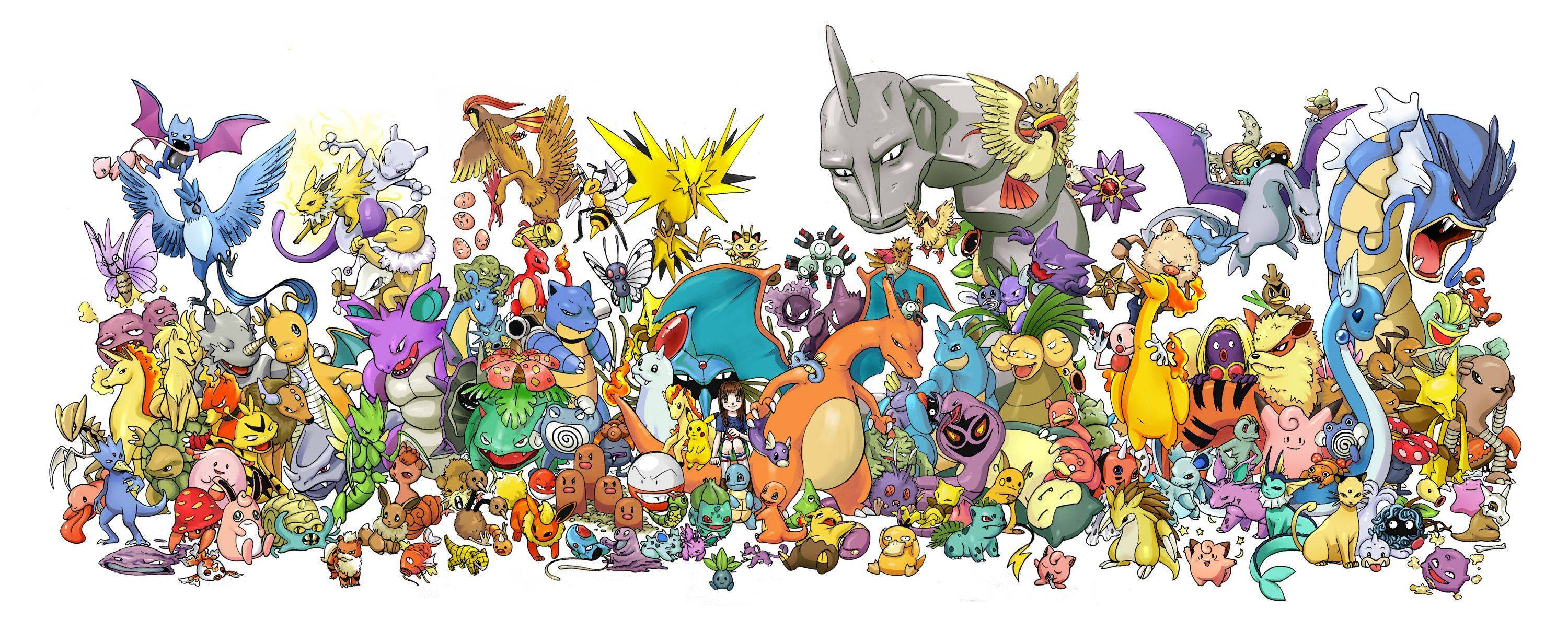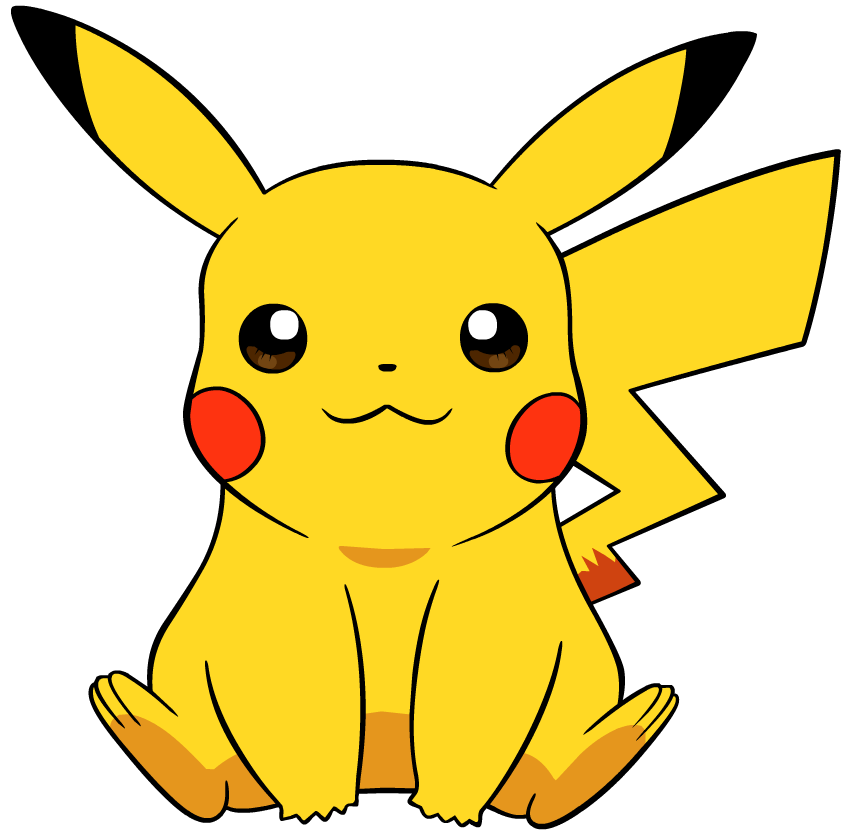Key Takeaways:
Patience is key when launching a unique product
in a new territory
Multimedia blitz – go big or go home, and have
great mascot on your side
Image based positioning approach suited the game
Everyone knows Pikachu. The yellow electric rodent that is
the face of the Pokémon franchise is
now as iconic as Mickey Mouse. As of this writing, the main Pokémon series has sold over 200 million
copies since its beginnings in 1996. With spinoffs, that number grows to a
staggering 279 million copies sold. Video Games are only the beginning, as the Pokémon franchise has also found its way
into television, movies, trading cards, merchandise, etc. Most game creators
can only dream of the unbelievable success this franchise has found. The only
questions left to answer are why and how did this seemingly niche franchise
that began its life late in the Game Boy’s life cycle take off to a level nearly
unparalleled within the industry.
Pokémon started
its development in Japan in 1996 when lead designer Saoshi Tajiri sought to
create a game that embodied his childhood experiences of capturing bugs in his
backyard. Over 6 years, he and his team at GameFreak (which later became The Pokémon
Company) created 151 unique monsters to capture, train, and battle against
opponents. The first game was an immediate hit in Japan, with 10 month sales
figures upwards of 10 million units, far surpassing previous expectations of
100,000 to 200,000. To capitalize on the popularity, trading cards of all the
different monsters were released and a Japanese anime was developed chronicling
the trials of a young boy aiming to become a “Pokémon master”. While the
television program educated viewers on the world of Pokémon, the trading cards
acted as both a game and a collectible, targeting multiple segments. Despite
the enthusiasm in Japan, Nintendo of America was patient in deciding whether to
bring the game and media to the U.S.; however, once it became evident through
sales that the franchise had significant potential, it was localized and
released in the States. Immediately it was a hit on all fronts, reviving the
Game Boy, becoming the #1 rated children’s show and selling millions of cards. Since
then, the number of Pokémon has grown
and each iteration of the game continues to sell millions of copies when
released.

(Gotta Catch 'Em All! Credit: Wallpapercave.com)
In order to market the concept, Nintendo focused on the
collection aspect of the games, specifically that there were 151 unique
characters to catch, train and bond with over time. Nintendo marketing was also
where the famous tagline “Gotta Catch ‘Em All” originated. Given that Pokémon is more of an intellectual game,
with strategy and timing playing more of an element than immediate action, the
approach was sound considering children were the end users who may not have
been exposed to this type of game. The image based positioning model cajoles
users into an exploratory mentality, one where they will not know who or what
is around the next corner or in the next area. Considering the game has some
inherent complexities for children, this was a shrewd way to introduce the
product. From there, the game could educate the users further. In addition,
game introduced children to a new social faction, as Console Wars author Blake J. Harris noted in a recent interview “[Pokémon] was a whole other world that
kids understood, 151 characters that they all knew the names of and created a
new way to socialize” (Personal Interview, 3/23). In essence, the game and
multimedia push with the television show and trading cards created its own
social network. The intrigue to finding and training new Pokémon along with heightened social capabilities such as online
play and trading has further developed brand loyalty among long time users.

(Ash attempting to catch a Pokemon from the TV Show. Credit: Instantreplay.tumblr.com)
The decision to be patient with bringing Pokémon to the West paid off as well.
Not only was Nintendo able to gain substantial data on how the product
performed in Japan, but it also blitzed all forms of media when it was ready to
launch. With the game, television show, and trading cards, it was virtually
impossible to escape Pokémon in the
late 90’s and the familiar face of Pikachu. The shocking companion was thought
to be a good fit for his appeal to multiple demographics, and as Harris noted
“The reason [Nintendo] chose [Pikachu] is simply that he looks the best to kids”
(Personal Interview, 3/23). Pikachu has a wide ranging appeal. Not only is the
character’s cute nature and aesthetics appealing to children, but Pikachu also
has power and ferocity necessary to gain older fans as well. Patience and an
enduring mascot also were key strategic decisions that laid the groundwork for
success by the franchise and still are seen today with latest releases.

(Who wouldn't want one? Credit: Pokemon.wikia.com)
Finally, a combination of strategic partnerships and brand
loyalty has made the Pokémon franchise
successful over the last two decades. At the beginning of its inception,
Nintendo of America’s licensing agent, 4Kids Entertainment, was well aware of
the success in Japan for the franchise and helped find strategic opportunities
to grow the brand, including partnering with fast food restaurant chains to
distribute toys and finding enticing merchandise opportunities (Fournier, 4); however,
Nintendo historically was strict with its licensing rights and thus did not
overexpose the brand to a surplus of outlets, choosing quality over quantity to
protect brand equity. The games themselves, while similar in nature, offer
enough deep customization and strategic analyses for advanced players coupled
with a user-friendliness for newcomers. As Forbes
video game industry journalist Paul Tassi stated, “Its gameplay was always
accessible, its concept was always fun, which is why it could keep attracting
new fans”. Furthermore, Tassi pointed out that there was a deficiency of true
competitors to the brand, “Brand loyalty was created through iconic characters,
but also because nothing better ever came along. Nintendo kept improving on an
already great formula, and there was never a reason to give it up.” In essence,
Pokémon has had a monopoly, as there
were very few games similar before it, and nothing truly replicated it
afterwards. The Digimon franchise
attempted to take market share, but it never truly came close to what Pokémon accomplished.

(Pokemon are still everywhere. Credit: www.business2community.com)
In conclusion, the Pokémon
franchise has succeeded due to multiple marketing and strategic choices. An
outstanding image based positioning model coupled with a likable mascot and
patience to create a strong go to market strategy has in turn led to long term
success for Nintendo and its partners. That being said, something not to be overlooked
is the content of the game. Pokémon
is fun for all ages and individuals. Anyone can enter the unique and detailed
world and has the opportunity to create whatever experience is desired. Whether
it is cultivating a perfect team of monsters for battle or simply collecting
all of the Pokémon, each individual’s
gameplay experience will differ in some capacity, and the game embraces that concept.
Since the inception of the first game, there are now 721 confirmed Pokémon in the wild, so the
possibilities are endless. Pokémon is
still a juggernaut in gaming, and with accessible gameplay alongside deep
strategy elements, it will continue to endure over time.
Sources:
Fournier, Susan, “Pokémon:
Gotta Catch ‘Em All”, Harvard Business School, June 19, 2001
Barder, Ollie, “’Pokémon’
As a Series Has Sold More Than 200 Million Copies Globally”, March 17,
2016, http://www.forbes.com/sites/olliebarder/2016/03/17/pokemon-as-a-series-has-sold-more-than-200-million-copies-globally/#12f9753e6601
You noted 'there was a deficiency of true competitors to the brand, “Brand loyalty was created through iconic characters, but also because nothing better ever came along."' After considering the product life cycle of Pokemon, I assumed you might say competitors pushed them out. Given this is not the case, what do you think really propelled Pokemon beyond its maturity stage? Can it be revived?
ReplyDeleteGreat question. The truth is, I'm not sure there needs to be a full blown revival. The latest installment in the franchise, Pokemon X/Y, sold a staggering 13.75 million copies in 2013, which is a dream for almost any other game not named Call of Duty. Now if the upcoming Pokemon Sun and Moon games turn out to be failures there may be a need to re-evaluate. Nevertheless, I think at the end of the day the series will never be the phenomenon it was 15 years ago, but it's still in great shape.
Delete